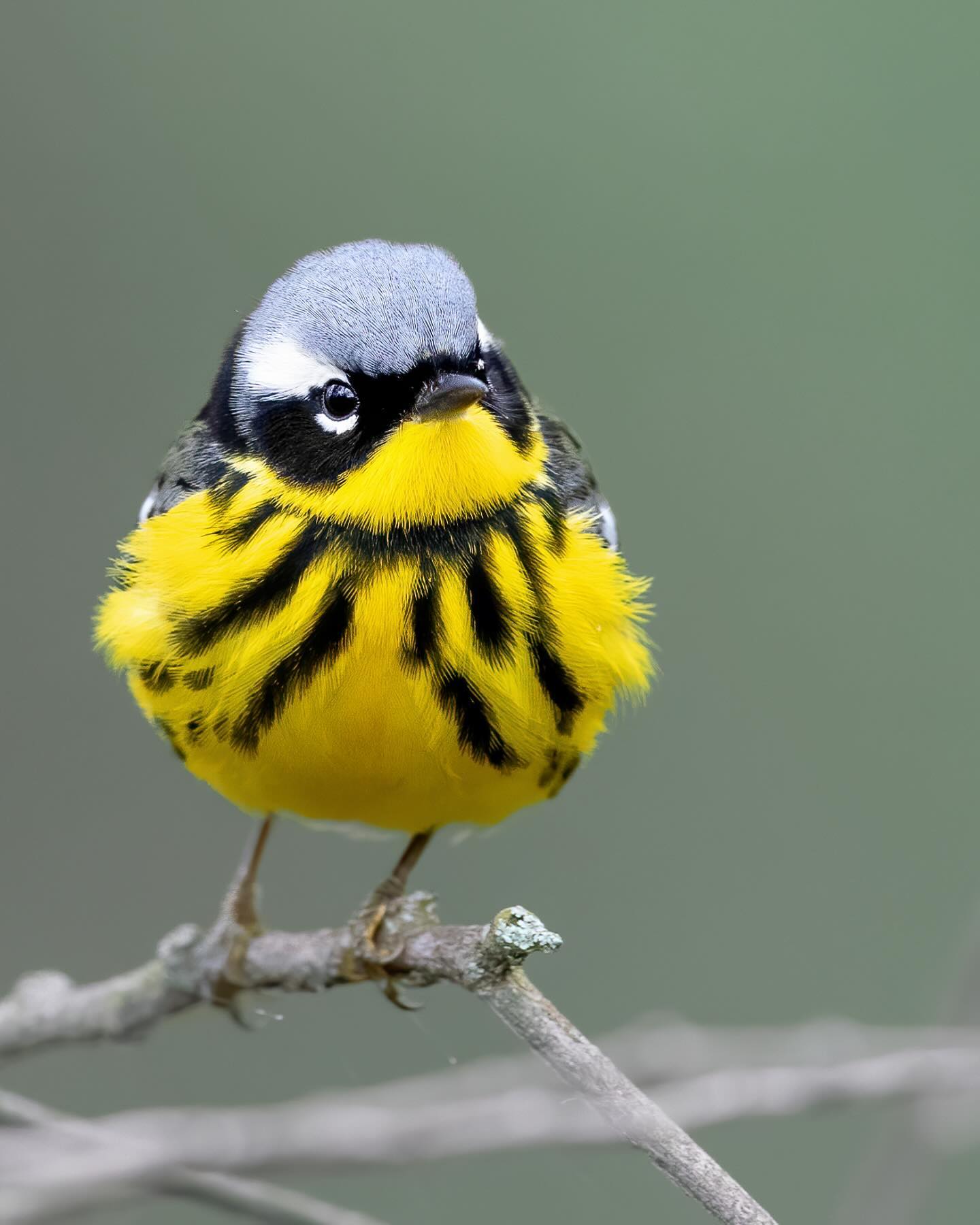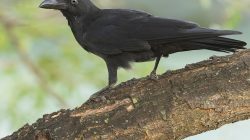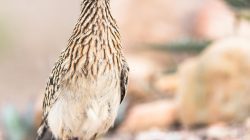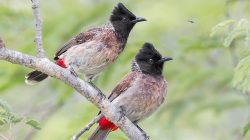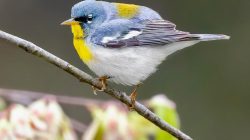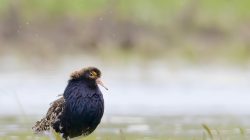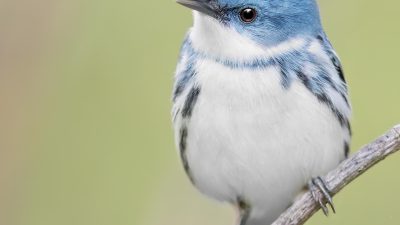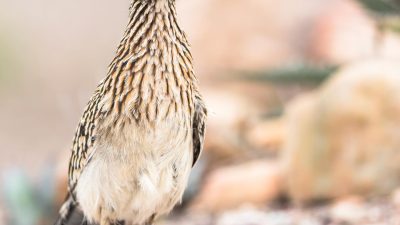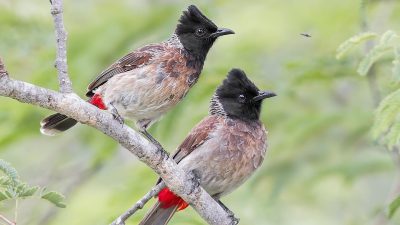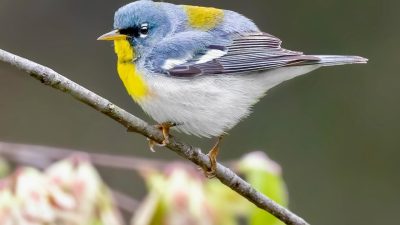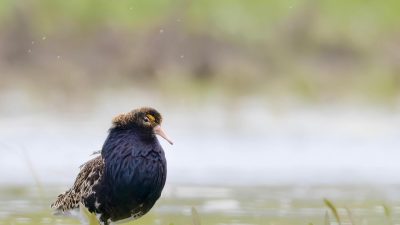Northern Hawk Owl (Surnia ulula): A Comprehensive Exploration of a Unique Arctic Predator
Diajar.net – The Northern Hawk Owl (Surnia ulula) is a captivating raptor native to the northern reaches of the world. Known for its striking appearance, exceptional hunting skills, and resilience in harsh environments, this owl has fascinated ornithologists and wildlife enthusiasts alike. It’s a species that thrives in the frigid, expansive wilderness of the Arctic and boreal regions, and its unique traits make it an excellent subject for a detailed examination. In this article, we will delve into the origin of its name, its appearance, distribution, geography, habits and lifestyle, diet and nutrition, population, number of populations, and its conservation status.
Origin of Animal Name
The scientific name of the Northern Hawk Owl, Surnia ulula, reflects both its taxonomic heritage and its striking physical appearance. The genus name, Surnia, is derived from the Latin word surnia, which was used to describe owls in general. Its origin is somewhat ambiguous, but it may be linked to the Latin surnus, a term for certain birds of prey. The species name, ulula, comes from the Latin word for owl. This nomenclature is a reflection of its clear association with the larger family of owls, and particularly with its characteristic hunting abilities, often likened to those of hawks.
The common name, Northern Hawk Owl, aptly describes both the owl’s appearance and its preferred habitat. The “hawk” portion of the name comes from its striking resemblance to hawks, particularly in terms of body structure and hunting techniques, while the “northern” descriptor refers to its preference for the cold, northern regions of the globe. The bird’s hunting style, with its sharp eyes and speed, further strengthens this connection to hawks.
Appearance
The Northern Hawk Owl is a distinctive and visually striking bird that stands out in its native habitats. It is a medium-sized owl, measuring about 40 to 46 cm (16 to 18 inches) in length, with a wingspan of approximately 80 to 100 cm (31 to 39 inches). The most remarkable feature of this owl is its hawk-like appearance, which sets it apart from other owls.
Plumage
The plumage of the Northern Hawk Owl is composed of a mix of brown, white, and gray, with dark streaks across the chest and abdomen. The bird’s back and wings are covered in dark brown with lighter, finely speckled markings. Its head is relatively small compared to the body, and it has a white facial disc with darker rings around the eyes, giving it a somewhat hawkish appearance. The yellow eyes are large and intense, contributing to its predatory stare.
The tail is long and barred with black and white, another feature that reinforces the bird’s hawk-like look. The legs are covered with feathers down to the feet, which helps the owl withstand the cold environments it inhabits. Its beak is short, curved, and sharp, perfectly adapted for gripping and tearing apart its prey.
Sexual Dimorphism
Like many owl species, male and female Northern Hawk Owls look very similar, with little noticeable difference in size or color. However, females tend to be slightly larger and may have a more pronounced streaking on their chests. In general, the owl’s coloration helps it blend into the tree branches and the snowy ground, an essential adaptation for survival in its environment.
Distribution
The Northern Hawk Owl is primarily found in the boreal forests and taiga of the northern parts of North America and Eurasia. Its range spans from Alaska and parts of Canada to Scandinavia, Russia, and parts of Northern Europe. This owl species has a broad distribution, though it is typically found at high latitudes, far from the equator.
North America
In North America, the Northern Hawk Owl is found primarily in the forests and woodlands of Canada, particularly in the boreal forests stretching from the Yukon to the Great Lakes. In the United States, it can be seen in Alaska and parts of Minnesota and Northern New England. However, sightings of the Northern Hawk Owl are less common in the southern parts of its range, where it tends to avoid heavily forested regions and prefers open spaces, such as the edges of forests and tundra.
Eurasia
In Eurasia, the Northern Hawk Owl is widely distributed throughout the northern forests of Russia, including Siberia, and parts of Scandinavia, particularly Norway and Sweden. It is also found in parts of Finland and Estonia, where it migrates to lower altitudes during winter to find more accessible food sources.
Geography
The Northern Hawk Owl is an adaptable bird that can thrive in a range of geographical environments, although it is most commonly associated with the harsh, cold regions of the world. Its range is closely tied to the presence of coniferous forests, open woodlands, and tundra-like habitats that provide both the cover and food sources it needs.
Preferred Habitats
Northern Hawk Owls prefer forested regions with open landscapes. These can include boreal forests, coniferous woodlands, and mixed forests, where they can easily hunt and roost. The bird is often found in forest edges and clearings rather than densely forested areas, as these provide better visibility for hunting and spotting prey.
The presence of rocky outcrops and tall trees is also important for this species, as they use these elevated areas as perches for hunting. Additionally, the owl often roosts on high branches or stumps, staying vigilant to avoid predators and to keep an eye on its surroundings.
Habits and Lifestyle
The Northern Hawk Owl is an active, daytime predator, a characteristic that sets it apart from many other owl species that tend to be nocturnal. Its hunting style resembles that of hawks, where it uses its keen eyesight to spot prey from a distance. The owl is also known for being highly aggressive in defending its territory.
Hunting Techniques
Northern Hawk Owls primarily hunt by perching in high places, such as tree branches or fence posts, where they have a clear view of their surroundings. Once they spot prey, they will swoop down rapidly to catch it. They rely on their sharp vision to detect small mammals, birds, and insects, and they are particularly adept at catching small rodents, such as voles and lemmings.
Unlike many owls, which rely on silent flight, the Northern Hawk Owl’s flight is more direct and aggressive, and it is capable of high-speed chases to capture prey. They will often pursue prey over considerable distances if necessary.
Behavioral Traits
The Northern Hawk Owl is not particularly social and is generally solitary, except during the breeding season. Males are known to defend territories aggressively, calling out to warn other males to stay away. In the winter months, however, the owls may form loose groups in areas where food is abundant.
Diet and Nutrition
The Northern Hawk Owl is a carnivore, feeding primarily on small mammals, birds, and insects. Its diet consists mainly of voles, shrews, mice, lemmings, and small songbirds, as well as insects and other invertebrates when these are more plentiful.
The owl uses its keen eyesight to spot prey from a distance, often hunting in the early morning or late afternoon. The bird hunts in a low flight or from a perched position, making rapid dives to capture prey.
In winter, when prey becomes scarcer, the Northern Hawk Owl may adjust its diet to include larger birds or scavenge from carcasses left behind by other predators.
Population
The population of the Northern Hawk Owl is generally stable, though its numbers may fluctuate based on seasonal changes in food availability and environmental conditions. The IUCN (International Union for Conservation of Nature) classifies the Northern Hawk Owl as a species of Least Concern, with no immediate threat of extinction. However, there are certain regional variations in population density, with higher concentrations of the species found in northern parts of Canada, Alaska, and Russia.
Population Dynamics
The population size can vary greatly depending on the availability of prey and the severity of winters. In some areas, such as parts of Russia and Canada, the owl is relatively common and can be found in large numbers. In other regions, where the environment is harsher or food is scarcer, the Northern Hawk Owl’s numbers may decline temporarily, although it tends to recover quickly when conditions improve.
Number of Populations
The Northern Hawk Owl has several dispersed populations across its vast range. These populations are generally located in northern forests and woodlands across North America and Eurasia. While no exact numbers are available for each subpopulation, it is believed that the species is widely distributed in its preferred habitats.
There are likely several distinct subpopulations in Canada, Alaska, Scandinavia, and Russia, but the overall population is considered robust, with little evidence of dramatic declines.
Conservation
Though the Northern Hawk Owl is classified as a species of Least Concern, conservation efforts are still important to monitor and preserve its habitats. Major threats to the species include habitat loss, climate change, and pollution. Additionally, deforestation in some parts of its range may reduce suitable hunting grounds and nesting sites.
Conservation initiatives for the Northern Hawk Owl focus on the protection of its natural habitats, particularly the boreal forests and open woodlands. Forest management practices that reduce habitat fragmentation and ensure the preservation of mature forests are crucial for maintaining a stable population of this owl.
In addition, monitoring the effects of climate change on the owl’s habitat and prey availability is important. As global temperatures rise, shifts in prey populations and the availability of suitable habitat could affect the Northern Hawk Owl’s survival.
Conclusion
The Northern Hawk Owl (Surnia ulula) is a fascinating and resilient bird of prey that embodies the rugged beauty of the northern wilderness. With its unique appearance, impressive hunting skills, and adaptability to harsh environments, it has become one of the most intriguing species of owl. Though its population is stable for now, ongoing conservation efforts are necessary to ensure that this remarkable raptor continues to thrive in its natural habitat. By protecting the forests and ecosystems that support the Northern Hawk Owl, we can ensure that this distinctive species remains a prominent figure in the cold, northern landscapes it calls home.
